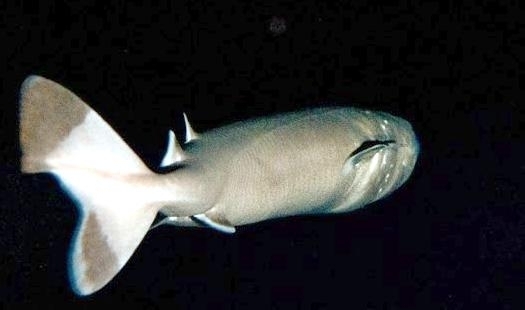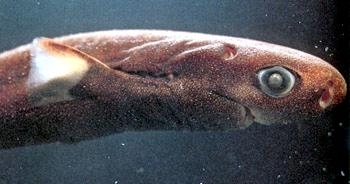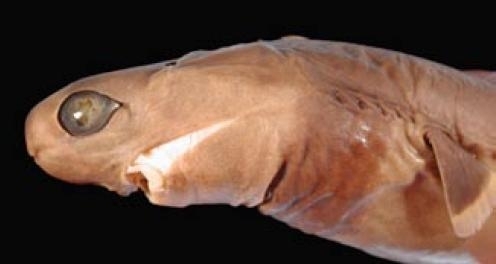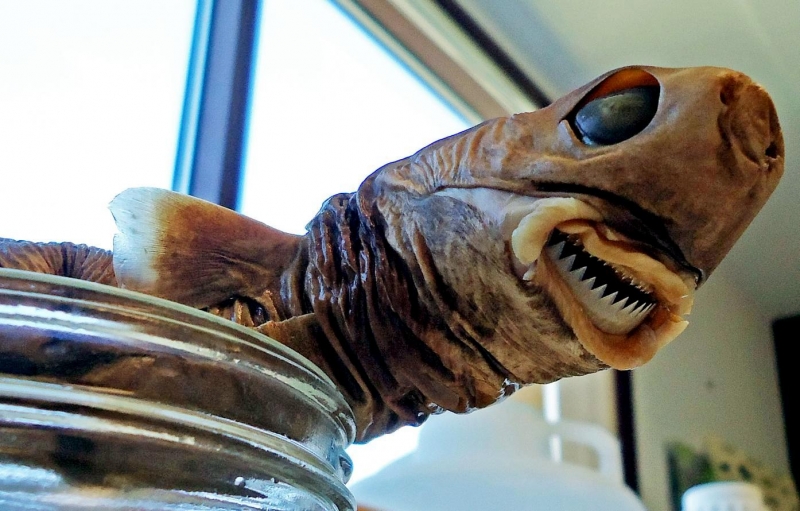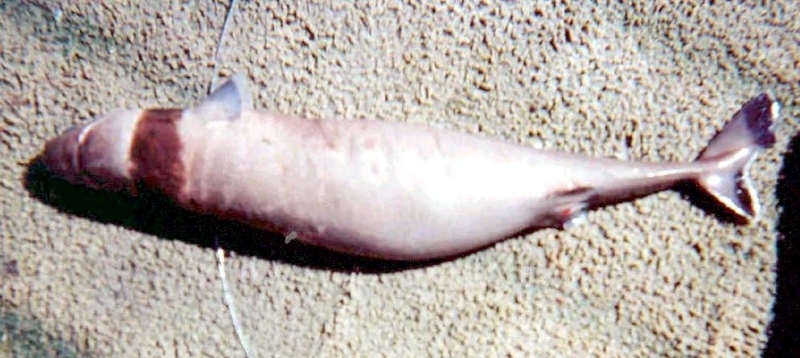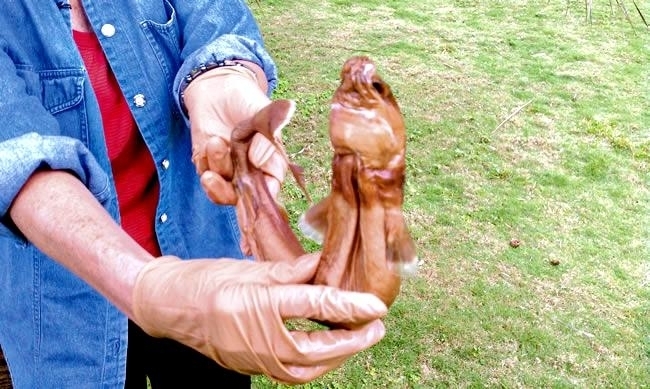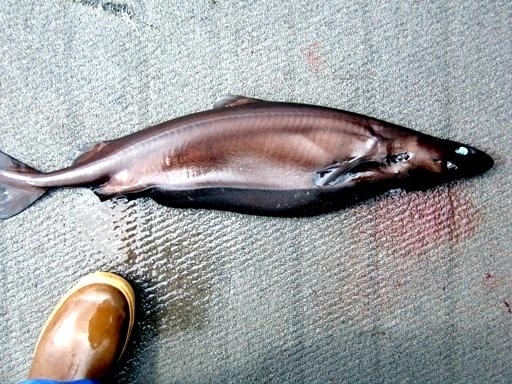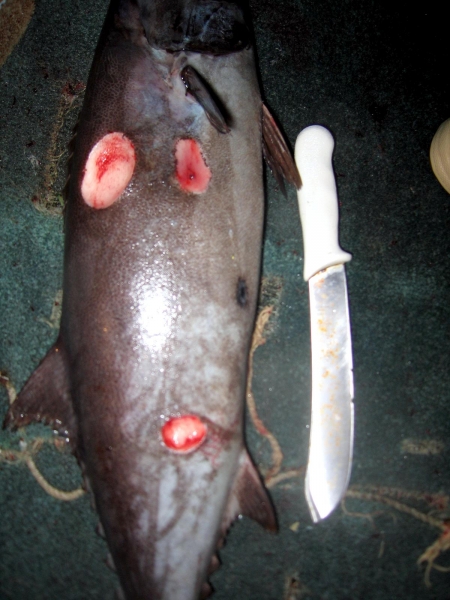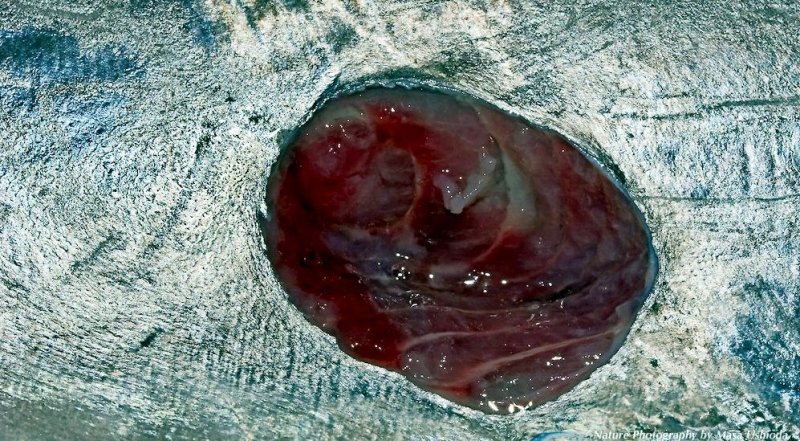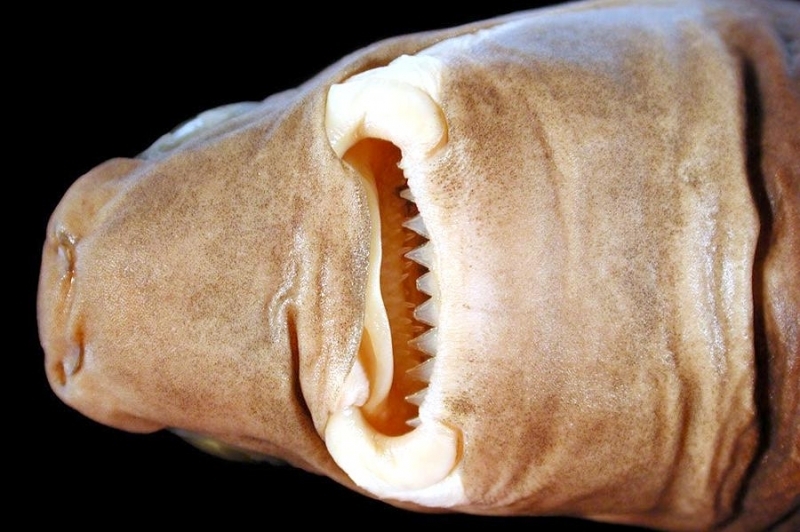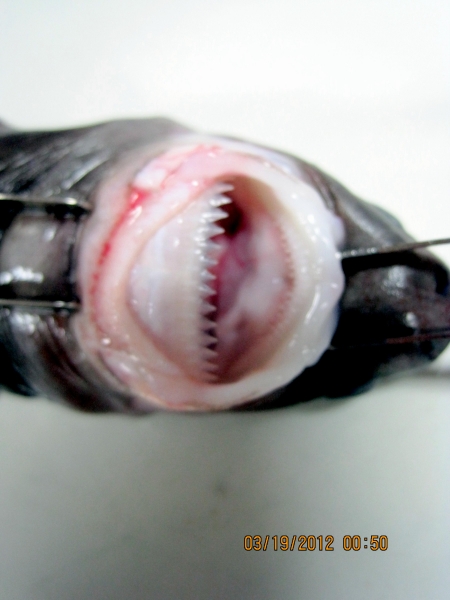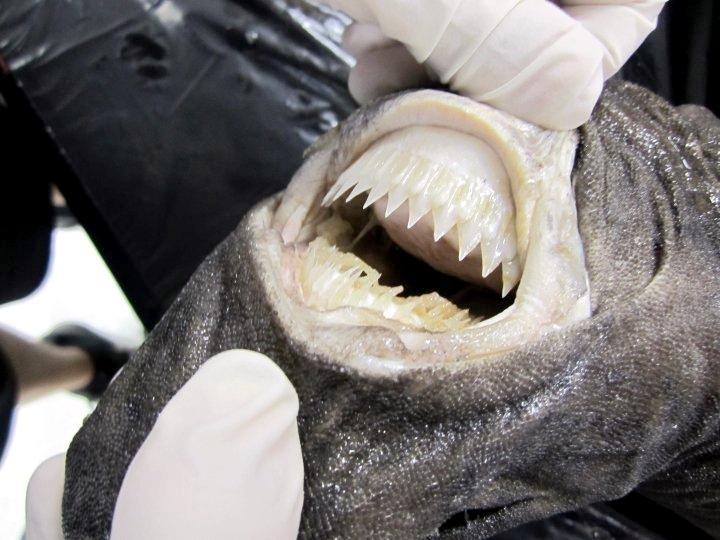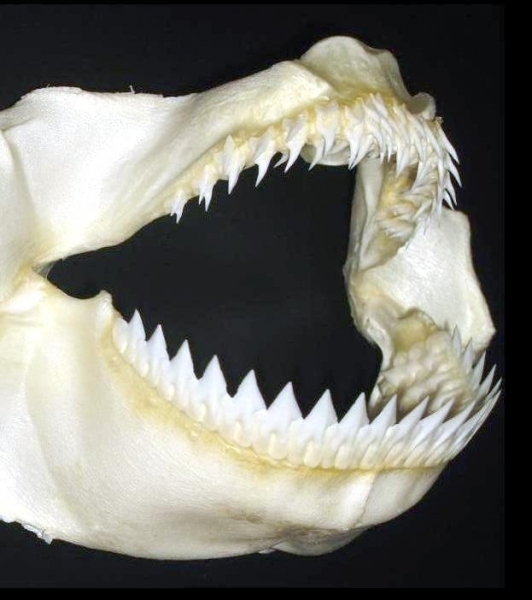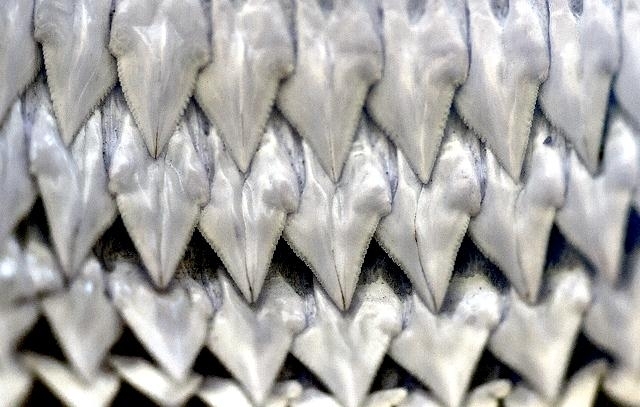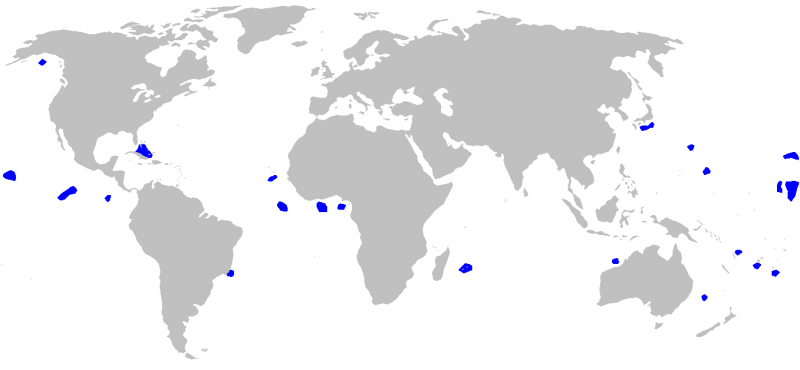“Isistius brasiliensis”
Cookie-Cutter Sharks are small, deep-water sharks named for the cookie-shaped wounds they leave on larger fish and marine mammals. Cookie-Cutters have cylindrical bodies that reach up to 50 centimeters in length. They have conical snouts and 2 low spineless dorsal fins positioned at the posterior (rear) end of their bodies. They are dark brown to black on their dorsal (upper) side, lighter ventrally (below) and possess a dark collar around their gill regions. The entire ventral surface with the exception of their dark collar is covered in a dense network of tiny photophores which emit a greenish glow (bioluminescence). This glow is reported to last as long as 3 hours after the shark’s death. Cookie-Cutter Sharks live in the warm, deep waters of equatorial oceans primarily in coastal waters near islands. They inhabit deep waters below 1,000 meters during the day and migrate into surface waters at night at around 300 meters. They have been found in depths up to 3,500 meters. They appear to blend with the light from above when viewed from below due to the shark’s ventral photophores that disguise the shark’s outline. The primary prey of the Cookie-Cutter Shark are squid, small fish and crustaceans. This shark also feeds on larger pelagic animals such as Wahoo, Tuna, Billfishes and marine mammals. They feed on the flesh of other species causing them harm but not death and it is not dependent on these species for survival.
A dark patch on the ventral surface of the Cookie-Cutter Shark resembles a smaller fish when viewed from below and is thought to lure larger fish & marine mammals that may be swimming beneath it. When this sneaky predator attacks its prey, it grabs hold of the flesh with its lips and bites using its small, sharp upper teeth to grip the prey while it cuts the flesh with the large, serrated lower teeth. The Cookie-Cutter Shark then spins its body to remove a “cookie-shaped” plug of flesh which it swallows before releasing its prey. Unlike other shark species that lose teeth individually, the teeth of the Cookie-Cutter Shark are shed as a single unit. The bottom teeth are swallowed, possibly to help maintain calcium levels in the body. Cookie-Cutter Sharks are ovoviviparous. Hatching takes places between 12-22 months with 6-12 pups per litter. When the young emerge, they are fully developed and able to hunt for food by themselves. Males mature at 36 centimeters and can grow to a size of 42 centimeters. Females mature at 39 centimeters and can reach up to 56 centimeters. The eggs are retained within the body of the female in a brood chamber where the embryo develops, receiving nourishment from a yolk sac. This is the method of reproduction for the “live-bearing” fishes where Cookie-Cutter Shark pups hatch from egg capsules inside the mother’s uterus and are born soon afterward.

